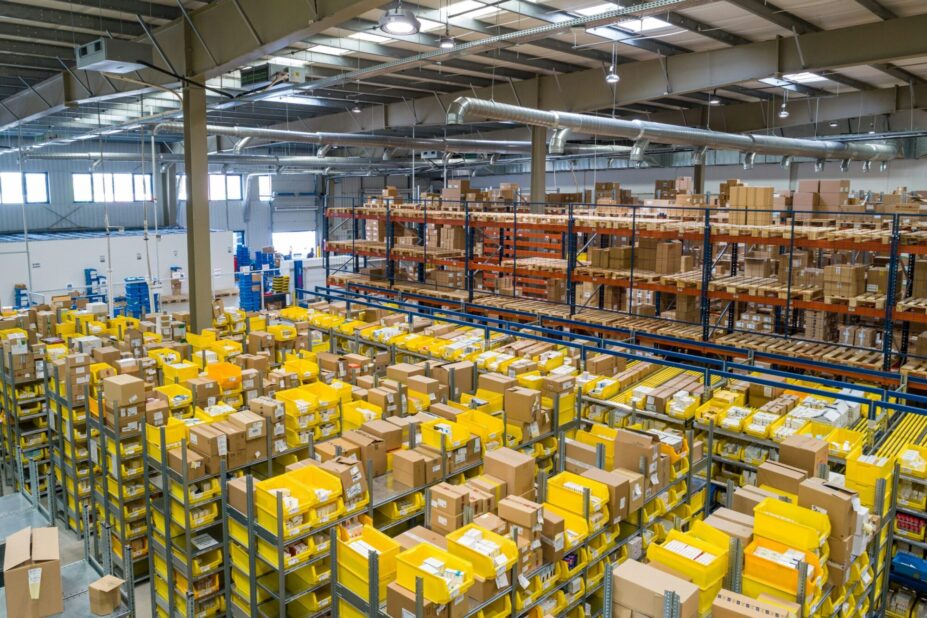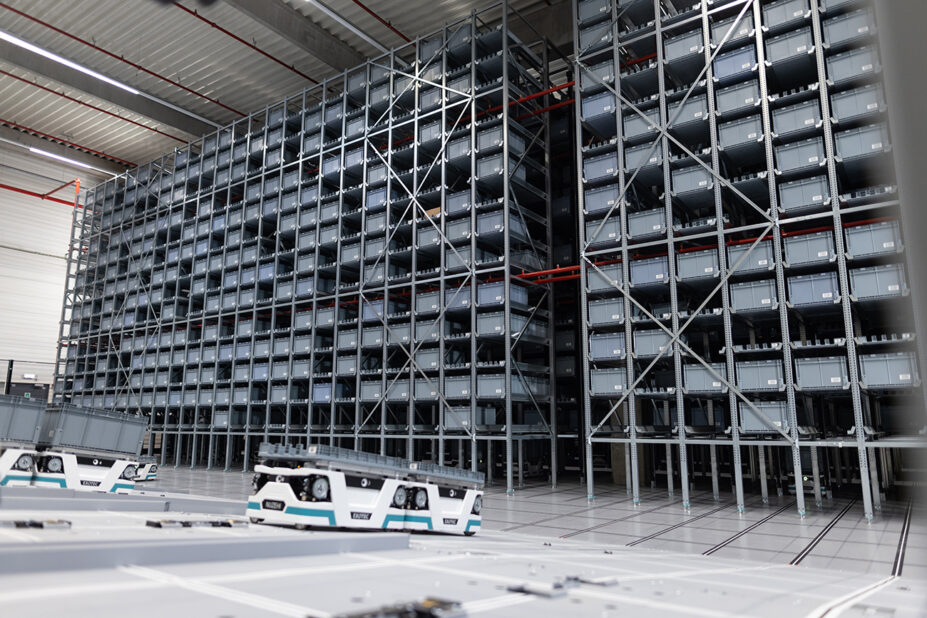Warehouses are being pushed to do more with less—less space, less labor, and less time—while still meeting rising customer demands for speed, accuracy, and product variety. That’s where storage optimization comes in. By rethinking how inventory is organized and integrating smarter tech, warehouses can increase storage density, speed up processes, and fulfill orders smarter. The result? Happier customers and a healthier bottom line.
This article explores the top strategies for warehouse optimization—from smart layout planning to automation and advanced inventory systems—and how they help operations run faster today while preparing for growth tomorrow.

Importance of Warehouse Storage Optimization
Warehouse storage optimization has become a cornerstone of operational efficiency. By maximizing space and reducing the need for excess movement and manual intervention, businesses can lower costs and improve throughput. Several market forces are driving the need for smarter storage strategies:
- The continued rise of e-commerce has led to increased order volumes and smaller average order sizes, straining traditional storage methods.
- The shift to omnichannel fulfillment requires flexible infrastructure that can handle varied order flows—retail, DTC, and returns—all within the same space.
- Ongoing labor shortages are making it harder to maintain productivity, pushing warehouses to adopt automation and more productive workflows to bridge the gap.
- High real estate costs are putting pressure on facilities to maximize storage density and throughput within existing footprints.
Ultimately, successful storage optimization translates to a faster, more agile, and more resilient operation. It enables better control, fewer disruptions, and a measurable competitive edge.

Key Strategies for Warehouse Storage Optimization
Space Utilization and Layout Design
When it comes to warehouse operations, how you use your space is just as important as how much space you have. Strategic layout and space utilization can dramatically improve throughput, reduce labor intensity, and boost overall operational agility—top priorities for any modern supply chain leader. But a useful layout design isn’t one-size-fits-all. It starts with a deep understanding of:
- Product characteristics: size, weight, handling requirements
- Order profiles: B2B vs. DTC, full-case vs. split-case
- Picking strategies: zone picking, wave picking, batch picking
- Throughput targets: seasonal vs. steady demand
A smart layout adapts to these variables. A reliable starting point for SKU placement is ABC analysis, a method that categorizes inventory into three groups based on their importance:
- A-items: the top-performing SKUs that generate the highest order volume or value and should be the most accessible
- B-items: mid-range products with moderate activity
- C-items: low-volume or infrequently ordered stock, often placed in less accessible areas
For instance, fast-moving A-items should be positioned near packing stations or high-traffic zones to reduce travel time. In contrast, slower-moving C-items can be housed in denser storage formats (like double-deep racking or high bay shelving), away from the main flow of activity. This simple framework helps see to it that high-velocity inventory stays front and center, while lower-priority items don’t hog prime real estate.
That said, advanced slotting takes it further by factoring in:
- Velocity heatmaps: Visual tools that show how often different warehouse zones are accessed for picking, helping managers identify high- and low-activity areas based on product movement
- Product affinities: Items frequently ordered together should be co-located to reduce multi-trip picking
- Handling complexity: Fragile, oversized, or regulated goods may need special storage zones that minimize risk and maximize compliance
The most productive operations often revisit slotting strategies monthly—or even weekly—to stay aligned with shifting demand patterns and evolving business priorities.
Inventory Management and Storage Allocation
One of the most overlooked levers in warehouse optimization is inventory itself—not just how much you carry, but what you carry and where it lives.
A good place to start is with SKU rationalization. This means regularly reviewing your product catalog to identify underperforming, redundant, or obsolete items. Trimming the fat helps reduce inventory clutter, improve pick paths, and free up valuable storage space for high-performing SKUs. For enterprise operations, this also reduces holding costs and simplifies forecasting, replenishment, and labor planning.
But inventory optimization doesn’t end with what you remove—it’s also about how you manage what stays. This is where dynamic inventory management becomes an advantage. Unlike static models that assign fixed locations to SKUs, dynamic systems use real-time data to adjust inventory placement based on:
- Demand shifts (e.g., seasonality, promotions, or regional spikes)
- Sales velocity (high-volume SKUs migrate closer to outbound docks)
- Inventory levels (automatically balancing overflow and replenishment zones)
- Market trends and SKU lifecycle changes
This level of adaptability allows warehouses to minimize stockouts, reduce excess inventory, and respond quickly to disruptions or unexpected demand surges. For companies managing complex networks—like multi-node fulfillment centers or omnichannel operations—this agility can directly support faster delivery SLAs and tighter inventory turns.
In short, effective inventory and storage allocation isn’t just about putting things on shelves—it’s about engineering flexibility into your warehouse, so you’re always ready for what’s next.
Implementing Automation and Robotics
A common pitfall in warehouse planning is thinking too much in square feet and not enough in cubic feet. Vertical space is often underutilized, especially in brownfield facilities. High-bay racking, mezzanines, and Automated Storage and Retrieval (AS/RS) systems allow operators to scale up without expanding out.
For example, the Exotec Skypod system redefines vertical space utilization with goods-to-person robots that retrieve inventory from racks up to 12 meters high, dramatically increasing storage density without expanding your warehouse footprint. But what truly sets Skypod apart is not just how it stores inventory—it’s how it manages multiple warehouse processes within a single AS/RS platform.
Unlike traditional systems that require dedicated zones, large machinery, and complex conveyance for tasks like picking, packing, buffering, sorting, and sequencing, the Skypod system does it all within one integrated framework. This means:
- No separate buffering areas eating up valuable floor space
- No need for bulky conveyor systems to connect sequencing and packing stations
- No additional shuttles or high-speed sorters to manage complex order flows
This results in simplified operations with fewer failure points, fewer product touches, and less labor—all while using less space.

Considerations for Successful Storage Optimization
Scalability and Flexibility
Scalability isn’t just about expansion—it’s about strategic elasticity: the ability to adapt storage capacity, layout, and logic in response to both growth and volatility. As fulfillment models evolve, SKU proliferation accelerates, and customer expectations shift, your storage system must do more than grow—it must reconfigure intelligently and respond in near real time.
Sophisticated operations approach scalability through modular design principles—not just in racking, but across WMS slotting logic, zone layouts, and replenishment strategies. This enables incremental growth without triggering full-scale retrofits. For instance, using uniform bin or carton sizes across zones allows automated or manual systems to absorb new SKUs with minimal disruption. Similarly, dynamic zoning based on velocity curves helps balance pick density as SKU profiles shift.
Flexibility also extends to temporal scaling. Your storage infrastructure should support temporary expansions (e.g., peak season storage pods or buffer zones) and contract afterward, without compromising slotting efficiency or WMS logic. Some facilities accomplish this using multi-purpose zones that can flip between fast-pick, bulk reserve, or returns depending on operational demands.
The most forward-thinking warehouses also build future-proofing levers into their initial designs—like underutilized vertical space, reserved utilities for automation expansion, and WMS rule sets that support multiple picking strategies (e.g., batch vs. wave vs. zone). These provide low-friction pathways for scaling capacity and throughput simultaneously.
Integration with WMS and Other Technologies
Effective storage optimization isn’t just about linking systems—it’s about enabling coordinated, real-time intelligence across your warehouse’s technology ecosystem. A well-integrated WMS should do more than record inventory locations; it should dynamically manage slotting based on SKU velocity, demand forecasts, seasonality, and replenishment cycles, often in coordination with ERP and order management data.
One advanced approach is to configure the WMS to automatically reassign storage locations based on changing pick frequencies, inventory turnover, or packaging profiles. This ensures high-demand SKUs are kept in more accessible zones while slow-movers are pushed to remote or higher-density storage.
True optimization also requires consistent master data—including dimensions, handling constraints, and product families—shared across systems. Mismatches between the WMS and ERP can lead to inefficient storage use, bin overflows, or inaccurate capacity planning.
To push performance further, some operations layer in predictive analytics or digital twins, using historical and real-time data to simulate how layout changes, order spikes, or SKU introductions will affect storage needs. These tools support more informed planning and reduce the risk of over- or under-utilizing available space.
Workforce Considerations
Whether you’re running a manual or largely automated warehouse, people remain the core of effective storage operations. Optimizing storage isn’t just about squeezing more items into a space—it’s also about improving how workers interact with that space to boost productivity and reduce fatigue.
Well-designed storage systems should minimize unnecessary walking, reaching, and lifting. That means slotting high-velocity SKUs in easily accessible locations, grouping commonly picked items together, and avoiding storing heavy items in high or low positions. These small adjustments can have a big impact on speed and safety.
As some facilities introduce basic automation—like conveyors or pick-to-light systems—roles begin to shift. Workers may take on more responsibilities around exception handling, inventory monitoring, or light equipment operation. In these environments, cross-training becomes especially valuable, enabling teams to stay flexible as processes evolve.
Storage planning should reflect real workforce patterns: Who’s working which shifts? Where are bottlenecks happening? Which tasks cause the most strain or errors? The answers to these questions should inform how inventory is slotted and how pick paths are organized.
In short, optimizing storage means designing with your workforce in mind—so they can work faster, safer, and smarter, regardless of how much automation is in place.
Preparing Your Warehouse for the Future
Warehouse storage optimization is no longer optional—it’s a strategic imperative. With ongoing shifts in consumer expectations, product diversity, and fulfillment models, warehouse leaders must rethink how space, technology, and people interact.
Organizations can maximize impact, reduce costs, and stay ahead of demand by applying a structured, data-informed storage approach rooted in automation, lean principles, and smart system integration.
Want to see how a high performance storage and retrieval system works?
Share
Insights
-
November 24, 2025The Right Mix of People and Robotics Wins Peak Season
-
November 13, 2025Warehouse Worker Sentiment: Understanding the Impact of Automation on Retention and Satisfaction
-
August 5, 2025Value Chain vs. Supply Chain: What's the Difference?
News
-
November 13, 2025Nearly Half of Warehouse Workers Receive Raises Because of Warehouse Automation
-
November 4, 2025Exotec bolsters its leadership team with the appointments of a Chief People Officer and EVP of Finance
-
October 15, 2025Exotec Celebrates 10 Years of Innovation: Driving A New Era of Warehouse Technology
Events
-
February 9, 2026 | Las VegasManifest 2026
-
April 13, 2026 | AtlantaMODEX 2026